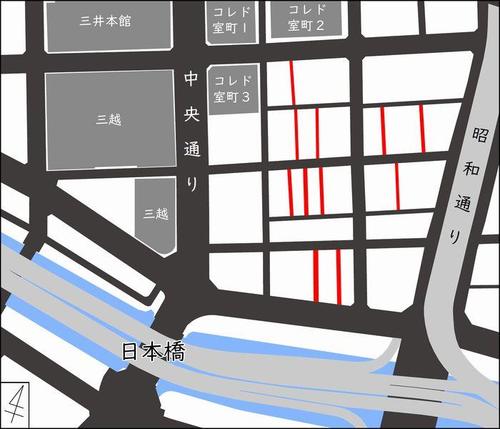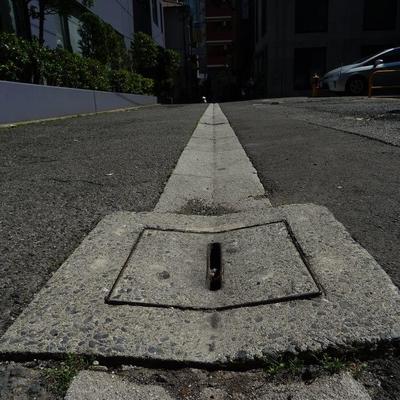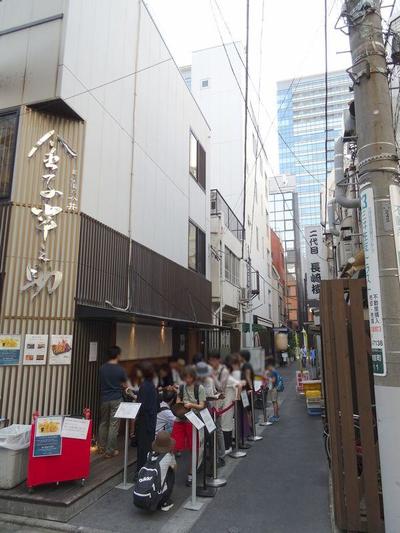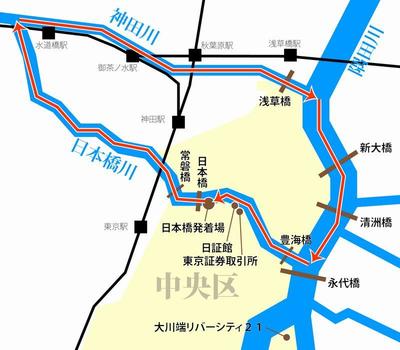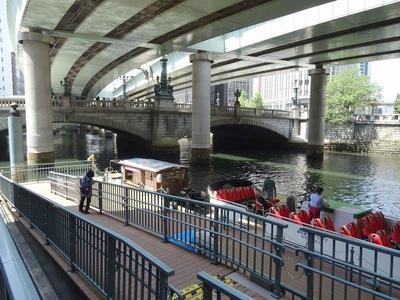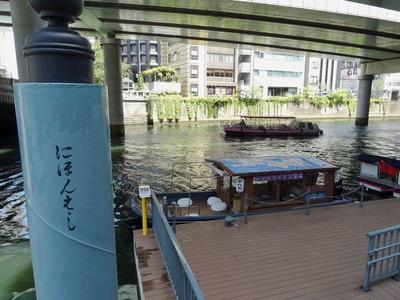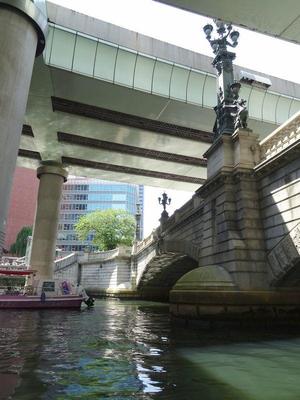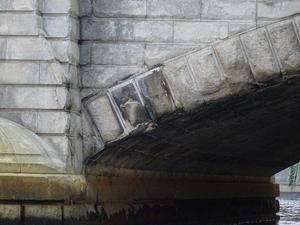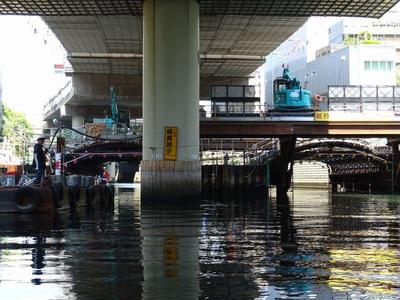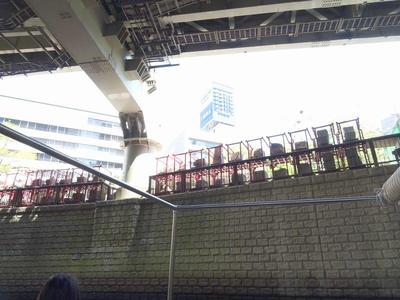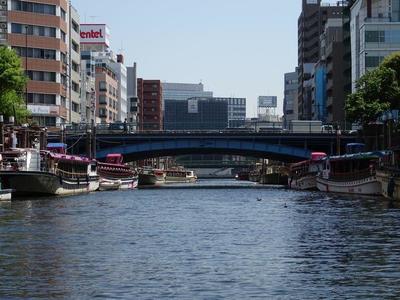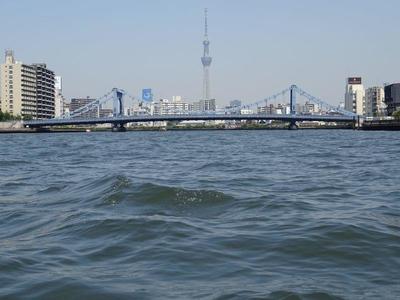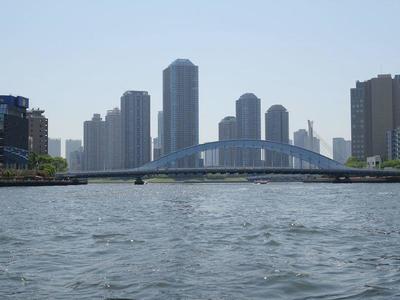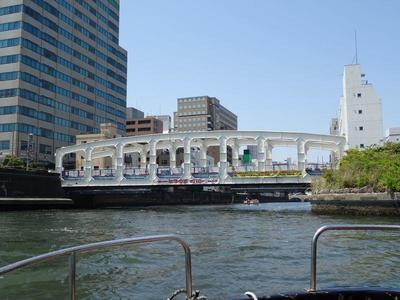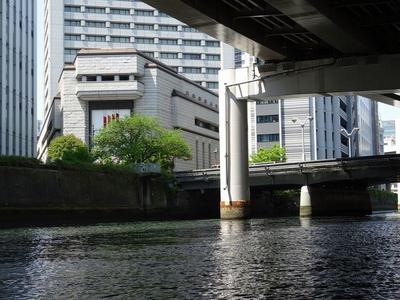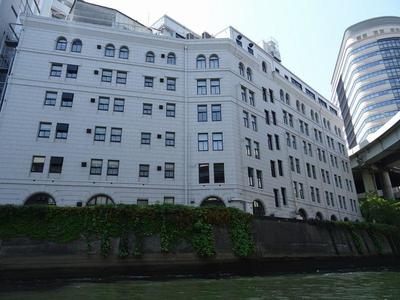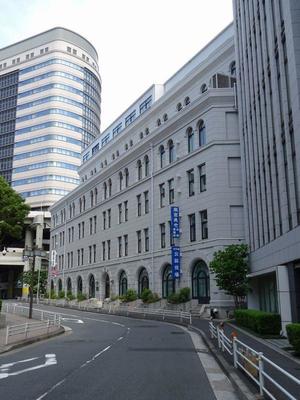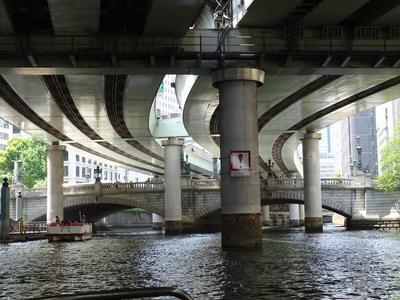Hello! Today, I would like to introduce some of the alleys that remain in Nihonbashi Muromachi.
Speaking of Nihonbashi Muromachi, I think the image of "Chuo-dori" is strong.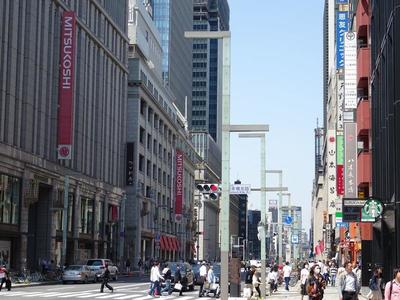
This is the main street representing Edo and Tokyo since the Edo period.
Nihonbashi Mitsukoshi Main Store and Mitsui Main Building (both nationally designated important cultural properties), various long-established stores, etc.
Recently, many local antenna shops are also highlighting.
When you enter the east side from this "Chuo-dori"
There are many old alleys left from Nihonbashi Muromachi 1-chome to Nihonbashi Honmachi 1-chome.
(In preparing this map, with the approval of the Geospatial Information Authority of Japan, we used basic map information issued by the House. (Approval No. 30, No. 225)
The road colored red on the map above becomes the alley.
In many areas of Chuo-ku, reconstruction projects after the Great Kanto Earthquake have developed wide streets and plots, which are the basis of the current city.
If the inside of the block was made up of small houses, a narrow alley (private road) was drawn into the site and it seemed to be an access route to each.
It seems that the urban structure of Edo townspeople's land was in the form of entering an alley from the shops facing the main street and connecting to a back tenement house.
In a sense, the same structure may have been handed down during the modernization of reconstruction after the earthquake.
After that, despite changes in various situations such as war disasters, high economic growth, and recent urban regeneration, they still remain.
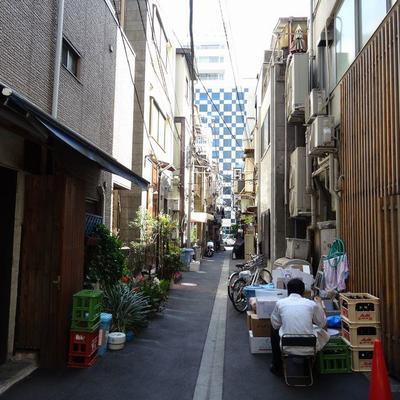
It is one of the alleys of Muromachi. Instead of Chuo-dori, it has a cityscape with a sense of life.
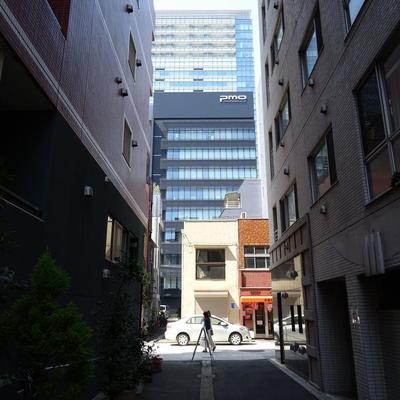
Where the main street is rebuilt into a building, it feels as if you were exploring in the dark.
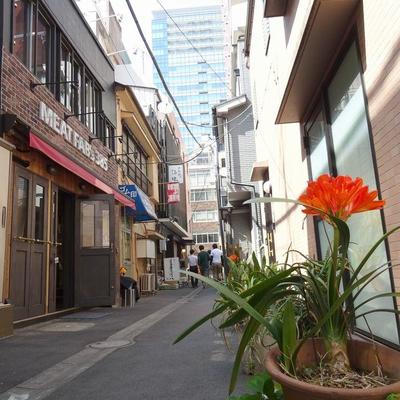
There are many places where plants are placed at the eaves, which delights the eyes.
It's a little maniac point of view....
One of the characteristics of the alleys around Nihonbashi is that the drain is located in the middle of the road.
On general roads, drains are provided on both sides of the road, taking into account the passage of vehicles.
Here, the middle of the road becomes a hollow, and water gathers.
It is said that Edo had a sewerage system that drains rainwater and domestic wastewater from that time.
In the alley between the tenement houses, the waterway was flowing in the middle of the road.
Perhaps the drainage ditch in the alleys of Nihonbashi can be said to be a remnant of the sewerage system in the Edo period.
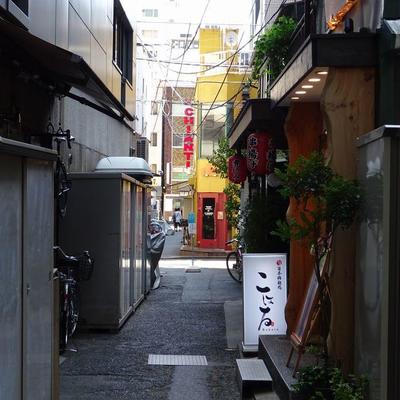
Along many alleys, there are various stores, mainly restaurants.
I'm looking forward to finding a hidden famous store.
Some of them are always lined up, such as "Kanenosuke Kaneko" in the photo.
In writing this article, I walked through the alleys of Muromachi 1-chome to Honmachi 1-chome.
It is also attractive that each alley has a different atmosphere.
I was able to enjoy Nihonbashi even more deeply.![]()
Reference:
・Ichiro Kobayashi (2014) "Walking along the alley with Yokocho"
